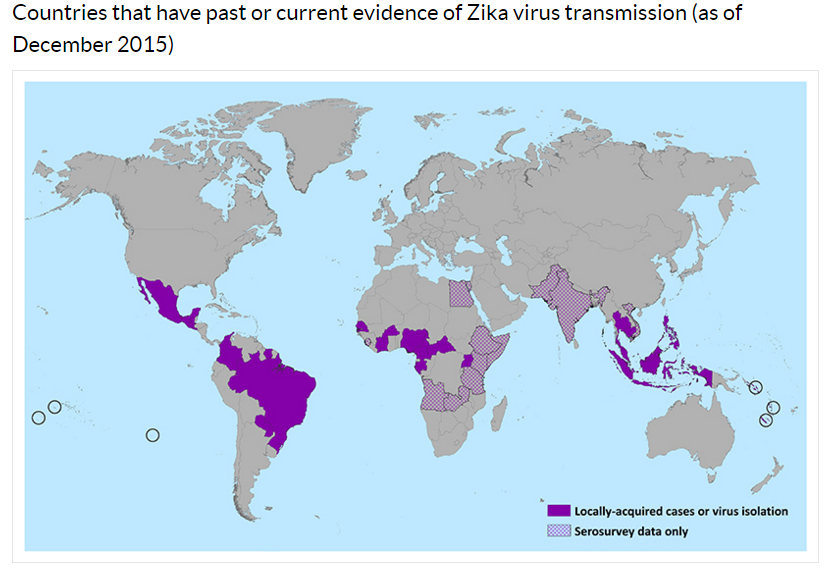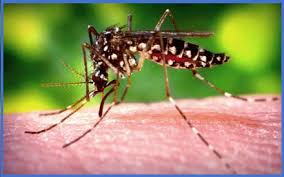With the presence of autochthonous, or locally transmitted Zika virus infection in nine countries in South and Central America and Mexico in 2015, the Centers for Disease Control and Prevention (CDC) issued travel notices for people traveling to the following countries: Mexico,  El Salvador, Guatemala, Panama, Brazil. Columbia, Suriname and Venezuela today. Local transmission means that mosquitoes in the area have been infected with Zika virus and are spreading it to people.
El Salvador, Guatemala, Panama, Brazil. Columbia, Suriname and Venezuela today. Local transmission means that mosquitoes in the area have been infected with Zika virus and are spreading it to people.
CDC recommends that travelers to these countries protect themselves from mosquito bites. The Ministry of Health of Brazil is concerned about a possible association between the Zika virus outbreak and increased numbers of babies born with birth defects. For this reason, pregnant women should take extra precautions to avoid mosquito bites.
numbers of babies born with birth defects. For this reason, pregnant women should take extra precautions to avoid mosquito bites.
There is no vaccine or medicine to prevent Zika virus infection. Travelers can protect themselves by preventing mosquito bites by covering exposed skin by wearing long-sleeved shirts and long pants; use an insect repellent approved by the Environmental Protection Agency as directed such as products containing DEET, Picaridin and Oil of lemon eucalyptus and staying and sleeping in screened-in or air-conditioned rooms.
Source: Outbreak News Today
The Center offers travel vaccinations and advice.


 researchers admit it is “controversial”.
researchers admit it is “controversial”. Regions in the Americas and Caribbean reported 17,398 recent cases of chikungunya, bringing the outbreak total to 1,788,058, according to a Pan American Health Organization (PAHO) update late last week.
Regions in the Americas and Caribbean reported 17,398 recent cases of chikungunya, bringing the outbreak total to 1,788,058, according to a Pan American Health Organization (PAHO) update late last week.

 expectancy for females was consistently higher than life expectancy for males. In 2014, the difference in life expectancy between females and males was 4.8 years, the same as in 2013.
expectancy for females was consistently higher than life expectancy for males. In 2014, the difference in life expectancy between females and males was 4.8 years, the same as in 2013.
